The best checking accounts let you properly manage your finances with seamless spending and access to your cash. They serve as the potential workhorse of your financial life.
As a young professional, you should look for a checking account that’s easy to manage on-the-go and doesn’t charge bogus fees. Our methodology on selecting the top checking accounts includes a comprehensive among accounts currently offered right now. We compared access to branches and fee-free ATMs, fees, balance minimums, interest-earning potential, availability, overall customer experience and more.
Best overall: The Axos Bank Rewards Checking account, offering a very attractive welcome bonus and a competitive interest rate, may be the top overall checking account currently by our estimation. There’s no fees for monthly maintenance, insufficient funds, overdrafts or withdrawals at domestic ATMs. And there’s a low entry of a $50 minimum initial deposit to open an account.
Overall: Best checking accounts for young professionals
- Our Pick: Axos Bank Rewards Checking
- Best checking account with savings goals: nbkc bank Everything Account
- Best checking/savings combo in one sign-up: SoFi Checking and Savings
- Best checking account welcome bonus: Chase Total Checking® account
Axos Bank Rewards Checking
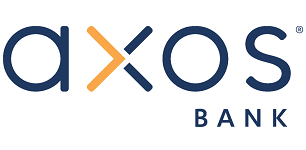
Axos Bank is another online-only bank with a strong offering for young professionals: the Axos Bank Rewards Checking. Axos’ high-yield checking account shines in terms of potential earnings, making it a unique choice for the financially savvy professional.
The account has no monthly maintenance fees and $0 overdraft or non-sufficient funds fees. But the real highlight here is the interest rates. Axos offers tiered interest rates that can reach up to 3.30% APY* based on certain conditions.
- You’ll earn an easy 0.40% APY when you receive monthly direct deposits totaling $1,500 or more. This is the first step to earning potential.
- After you’ve set that up, you can earn another 0.30% APY by making 10 transactions of at least $3 each month (or link an account to activate Personal Finance Manager).
- You’ll earn another 1.00% APY by keeping an average balance of at least $2,500 per month in an Axos Invest Managed Portfolios Account.
- You’ll earn another 1.00% APY by keeping an average balance of at least $2,500 per month in an Axos Invest Self Directed Trading Account.
- Finally, you’ll get an additional 0.60% APY when complete full monthly payments on an eligible Axos Bank mortgage, personal loan, or auto loan.
Competitive interest earning aside, as there’s quite a bit to qualify with, the Axos Bank Rewards Checking also provides unlimited domestic ATM fee reimbursements, a valuable feature for those who require regular cash access. There’s no minimum balance with no minimum deposit required to open an account. There’s also a great welcome bonus offer not to be missed out on of up to $500.†
The bank’s digital tools are also noteworthy. You can easily view transactions and payment history, deposit checks and pay bills through the Axos mobile app. Plus, the bank’s online platform provides extensive money management tools. In total, among all the checking accounts we considered, we believe it to be the best all-around checking account to open.
» MORE: Open an Axos Rewards Checking account
nbkc bank Everything Account
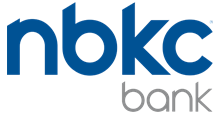
Fitting the name, the nbkc bank Everything Account is a checking account that lets you spend, track, save and earn all-in-one. This checking account earns 1.75% APY with no minimum opening deposit. There’s no monthly maintenance fees, minimum balance fees or overdraft fees.
You’re provided a debit card to spend anywhere or freely access 37,000+ ATMs nationwide. Out-of-network ATMs are reimbursed up to $12/month. There’s a auto-pay benefit to help ensure you pay your bills on time and tracking features to see how all your money’s being spent (that you can check out on your phone).
The nbkc Everything Account checking account adds customizable savings goals to the mix, kind of like what you would expect from one of the top budgeting apps. These can be specifically designed to fit your personal financial situation while you earn a competitive rate on your savings.
» MORE: Learn more from NBKC Bank’s site
SoFi Checking and Savings
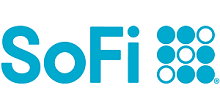
The popular SoFi Checking and Savings offers a combo checking account and savings account from an online bank. These are linked from the start in one easy sign up process.
Checking balances earn a 0.50% APY while savings balances with direct deposit earn a up to 4.60% APY. Up to is an important distinction here as if you don’t have direct deposit activity or qualifying deposits of at least $5,000 during the 30-day evaluation period to earn the higher rate, then you’ll earn a noticeable lower APY. In addition to the earning power, if you set up direct deposit, you may receive your paycheck up to two days early.
There’s no account fees and no-fee overdraft coverage with a limit of $50 on debit card purchases if you have monthly direct deposits of $1,000 or more. SoFi partners with Allpoint so you get ATM access without fees at any of the 55,000+ ATMs in network. A major con is that you’re not reimbursed for out-of-network ATMs to any amount as some other accounts offer.
The opening of both checking/saving in one process may seem attractive but you may benefit by choosing a best checking account from our top picks and considering one of the top high-yield savings accounts in a two-pronged process instead if you’re willing to compare options.
» MORE: Learn more about SoFi Checking and Savings
Chase Total Checking® account
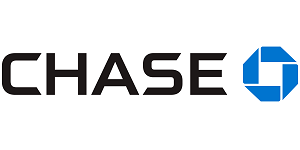
Chase Bank carries a superb reputation with a history of offering a wide range of financial products. The Chase Total Checking® account is a robust choice for young professionals offering one of the best bonuses for a checking account right now. Enjoy $300 if you open a new Chase Total Checking® account (by 7/24/2024) and make direct deposits totaling $500 or more within 90 days of coupon enrollment to qualify. You’ll get your bonus within 15 days.
There is a $12 monthly service fee, but it can be waived with direct deposits of $500 or more, a balance at the beginning of each day of $1,500 or more in this account, or an average beginning day balance of $5,000 or more in any combination of this account and linked qualifying deposits and investments.
Chase Overdraft Assist℠ helps save you from overdraft fees if you’ve overdrawn by $50 or less at the end of a business day or if you’re overdrawn by more than $50 and bring your account balance to overdrawn by $50 or less at the end of the next business day. You’re also not charged if a transaction is declined or returned unpaid, or an overdraft fee for items that are $5 or less.
Chase’s online and mobile banking services are truly top-notch, with features like online bill pay, mobile check deposit, account alerts and Zero Liability Protection. The mobile app is one of the best out there for a large bank. Plus, besides phone, tablet computer and the numerous local branches (over 4,700 for those who prefer in-person banking), you get access to over 15,000 ATMs.
» MORE: Open a Chase Total Checking® account or read our full review of Chase Bank
Top checking accounts compared
| Checking account | Bonus offer | APY | Monthly service fee | Min. deposit to open |
| Axos Bank Rewards Checking | Up to $500 checking bonus† | Up to up to 3.30%* APY | $0 |
$0 |
| nbkc bank Everything Account | N/A | 1.75% APY | $0 | $0 |
| SoFi Checking and Savings | Up to $300 checking and savings bonus | 0.50% APY | $0 | $0 |
| Chase Total Checking® account | $300 checking bonus | N/A | $12 or $0 (when waived) | $0 |
The competition
Our top five best checking accounts options offer much of what’s requested when searching for a checking account to open. There are other popular options we break down below for those who would like to consider others. We also dive into some general FAQs about the account type, including differences versus a savings account.
One alternative not included here is a cash management account, which operates as a hybrid savings/checking account with one account. Our favorite currently is the Wealthfront Cash Account because it earns a high rate of 5.00% APY with no account fees with up to $8M FDIC insurance while not skimping on features, like a debit card and ATM access.
Connexus Credit Union Xtraordinary Checking
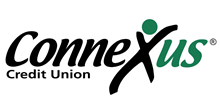
Connexus Credit Union offers three free checking account types: Innovative, Teen and the Xtraordinary.
The Connexus Credit Union Xtraordinary Checking high-yield account offers an up to 1.75% APY based on certain requirements and access to 67,000+ surcharge-free ATMs across the country. There’s no maintenance fees or minimum balance requirements. Note that you do need to either first have a savings account or open one with them to be able to open this account.
LendingClub Bank Rewards Checking
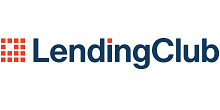
Another checking account that earns cash back with a debit card on qualified purchases is the LendingClub Rewards Checking account. To earn unlimited 1% cash back with your account-associated debit card, you’ll need to meet one of two qualifications: receive $1,000 worth of direct deposits into your account from an employer or another source of income or keep an average balance of $1,000 or more in your account.
This FDIC insured account from the online LendingClub Bank offers minimal interest starting with balances that exceed $2,500. Plus, there’s a number of checking features, such as free access to ATMs with unlimited ATM fee rebates, no overdraft or monthly maintenance fees and payment up to two days earlier on direct deposits.
Ally Bank Spending Account

Ally Bank is one of the leading online banks, perfect for young professionals on the go. Their Ally Bank Spending Account is attractive due to its lack of maintenance fees, no minimum deposit requirements and no overdraft fees. The account also generates interest of up to 0.25% APY, with rates varying by tier depending balance.
Despite being an online bank, Ally does an excellent job of providing 24/7 customer service, including live chat. They also offer mobile check deposits with your smartphone and a broad ATM network (43,000+ no-fee Allpoint ATMs). Fees charged at other ATMs nationwide are reimbursed up to $10 per statement cycle.
Capital One 360 Checking account

The Capital One 360 Checking account is another excellent choice for digital-savvy young professionals. It’s an online checking account that also earns a small amount of interest with no monthly fees, no minimums and no overdraft fees.
This 24/7 banking options provides fee-free access to over 70,000 ATMs nationwide, mobile check deposit, and an excellent mobile app from a well-known name. Plus, Capital One’s branches, including limited-service “Capital One Cafés,” offer a unique, relaxed environment for banking that can serve as working spaces with free Wi-Fi. The Café Ambassadors can help answer your questions about Capital One products and service, including your checking account.
Schwab Bank Investor Checking™ account

The Schwab Bank Investor Checking™ account is an excellent option for young professionals, particularly those who travel frequently or have an eye on investing. The account has no monthly service fees and requires no minimum balance along with no overdraft fees.
This account comes with a Schwab Bank Visa Platinum Debit Card and unlimited rebates on ATM fees worldwide as well as no foreign transaction fees, which makes it perfect for the young professional who loves to travel. It also is linked with a free brokerage account that funds can be moved between quickly with, providing an excellent opportunity to start dabbling in the basics of investing.
Chime® Online Checking Account
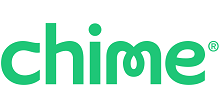
Chime’s online-only checking account makes everyday spending easy with the Chime Visa® Debit Card. This works anywhere Visa is accepted and can be used at over 60,000 fee-free ATMs with a backing of customizable security that a young professional can appreciate (including real-time transaction alerts).
This checking account with 24/7 mobile banking has no monthly service service, minimum balance fees or overdraft fees. Fee-free overdraft up to $200 is available on debit card purchases when you qualify for their SpotMe feature. Plus, get paid up to two days early with direct deposit on qualifying payments.
Both Chime and our top pick from Axos Bank offer strong alternatives to more traditional banking with their innovative and user-friendly platforms. These alternatives demonstrate how modern technology has come to transform everyday banking hassles into a seamless, more rewarding experience for the young professional.
Why you should open a top checking account
A checking account can become the hub of your financial life offering financial safety and easy access to your funds. Have your paycheck direct deposited in a checking account, take advantage the convenience of a debit card including ATM access for cash withdrawals and use a checking account to automatically pay your bills on time. Young professionals can look for a checking account that’s easy to manage on-the-go and doesn’t charge bogus fees. Some checking accounts go a step further and pay interest on your deposit or reimburse out-of-network ATM fees.
As always, it’s crucial to evaluate your individual financial needs and habits when deciding on the right checking account for you. We stress this many times over.
Reasons you may want to open multiple checking accounts
You may consider opening more than one checking account for a couple of reasons. Some include: easily accessing shared funds with a joint checking account, minimizing risk against FDIC coverage limits, better organizing your spending and a better tracking of your finances through separate accounts. A free business checking account becomes a valuable option, for example, to keep business transactions separate from personal ones.
There are also lucrative sign-up bonuses for checking accounts. These welcome bonuses for signing up or meeting certain requirements can be quite a lucrative incentive. Just be sure you can hit any spending requirements or qualify with direct deposits. Attractive perks may also be offered through a bank or financial institution for their other financial services or products if you also hold a checking account with them.
How to choose the best checking account
The ability to waive a monthly fee or not be penalized for overdrafts may be a deciding factor for some while a smooth mobile app from a trusted bank with security measures may take priority for other perspective users. Everyone also loves a good welcome bonus when it can be met rather easily (especially if you were going to sign up anyway).
Here are some useful tips when choosing the best checking account that’s right for you.
In-person vs online banking
Start with whether you need a bank that has physical branches or are up to a modern online-only checking account. A traditional brick-and-mortar may fit some lifestyles while a digital checking option may be the preference of most tech-savvy young professionals.
Monthly maintenance fees
Compare monthly fees and waiver qualifications to avoid them if they’re present, such as minimum balance requirements or direct deposits needed. If you’re unable to bypass the monthly fee, then it may be a better choice to consider a checking account that has no ongoing monthly fees. A $10 or $15 fee can add up over time.
Other common checking account fees
Naturally, when it comes to financial products and services, you expect to be subject to a schedule of fees. An overdraft fee, non-sufficient funds (NSF) fee, fees for paper statements, fees to close your account and foreign transaction fees related to debit card use are some commonly that can cost you. The list goes on. Look into avoiding the most fees possible related to penalties and regular usage of your checking account.
ATM access and fees
If you see yourself visiting an ATM often and want to stop paying ATM fees, the access to fee-free ATMs may be an important factor. Sticking with the ATM network included on your checking account usually won’t have any ATM fees incurred and there’s a number of top checking accounts that offer varying reimbursements for out-of-network ATM fees, even internationally.
Account benefits and features
The perks and benefits of a checking account should align with your preferences. Cash back earning with a rewards checking account is unique while early access to direct deposits (usually up to two days) has become a common headline. Consider what features are important for you.
Don’t skimp on researching the security features of your account as well, such as fraud monitoring, zero liability on fraudulent purchases and security measures when signing in and storing your personal information. This can come quite useful to avoid time-consuming headaches.
Mobile app capability
Whether you prefer more traditional or an online-only account, a smooth mobile app that’s easy to use with plentiful features related to your checking account can provide a smooth experience. User-friendly banking mobile apps allow you to deposit checks, check your transactions, integrate with popular peer-to-peer apps and lock your debit card if it gets lost or stolen.
Interest rate
Interest-bearing checking accounts, sometimes referred to as high-yield checking accounts, earn interest on your eligible checking account balance. Earning at a competitive interest rate may not be important to most young professionals over useful features or other incentives as a high-yield savings account better serves that priority.
Insurance
Verify your funds will be protected with an account that provides insurance before opening an account. The standard per depositor would be $250,000 per bank or credit union. A bank would be through the Federal Deposit Insurance Corporation (FDIC) and a credit union is federally insured by the National Credit Union Administration (NCUA). If the event the financial institution folds, you’ll be reimbursed up to the balance max in line with your deposit.
Customer service
Your overall experience with a checking account may depend on what happens when you hit a roadblock or even have a question about your account a commonly asked question page doesn’t cover. Reliable customer service and support that’s available and responsive can make the world of difference, especially on a first checking account for a young professional.
Differences between a checking account and savings account
Checking accounts are generally used to manage daily transactions with money regularly being withdrawn and deposited into the account. You may use a checking account for routine everyday spending, paying bills and ATM withdrawals through a provided debit card.
A savings account is an interest-bearing deposit account used for saving and growing your money. An emergency fund or a savings goal (five years or less out) would be stored in a savings account, for instance. These are typically subject to a lower number of transactions and include funds you need at a lesser frequency.
That said, we don’t recommend obsessing over interest with a checking account. No checking account will pay as much interest as the best high-interest savings account. Consider opening both and linking your checking with savings. Never keep more money in your checking account than you need for the next couple of weeks. The general rule is one to two months expenses and at most a buffer of 30% beyond that. Not only can this money be earning better interest in savings, it’s safe in the event somebody steals your debit card and drains your checking account.
Final thoughts
Choosing the right checking account from among the top options as a young professional will largely depend on your personal financial circumstances and lifestyle. Whether you prefer digital banking or in-person interactions, interest-bearing accounts, or extensive fee-free ATM networks, there’s an option for everyone.
Some of the best checking accounts right now include the Chase Total Checking® account and Axos Bank Rewards Checking but we advise to take the time the right choice to help you get started on your financial journey on the right foot. Remember, the key is to find an account that offers you convenience, low fees, and other benefits that align with your financial goals. Happy banking!
FAQs about checking accounts
What do you need to open a checking account?
To open a checking account you’ll need to verify your identity to confirm eligibility. You’ll be asked to provide personal information that includes your full legal name, physical address, social security number and provide a government-issued photo ID such as a driver’s license.
Are checking accounts safe?
Yes, checking accounts are a safe place to store your money and manage your finances. Confirm to make sure the checking account you’re considering offers insurance on your deposit. Bank deposits are FDIC insured while the NCUA applies to federally insured credit unions.
Do checking accounts earn interest?
Some checking accounts earn a flat rate of interest or require certain requirements to earn the maximum interest rate offered. Earning a highly competitive APY is not a traditional feature given how checking accounts are typically used. Checking accounts that do offer interest generally offer lower interest rates than savings accounts.
Are checking accounts liquid?
A checking account is considered one of the most liquid asset account types as it can be converted to cash in a short amount of time with an easy withdrawal. Checking accounts with a negative balance would be liability when tracking your net worth.
How many checking accounts can you have?
There’s no limit to the number of checking accounts you can open or hold. It’s good to have at least one checking account to manage your finances and you may want to open multiple checking accounts if you’re a business owner or would like a joint account.

